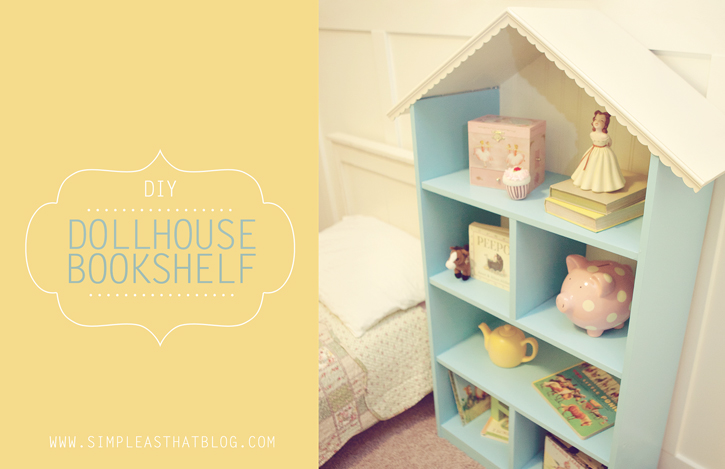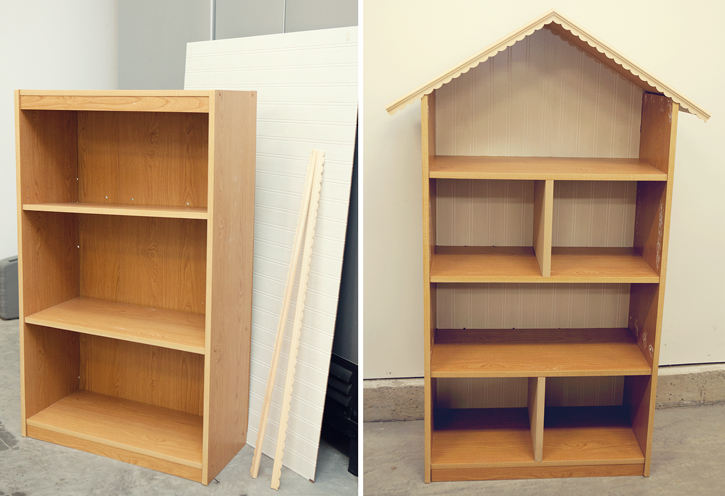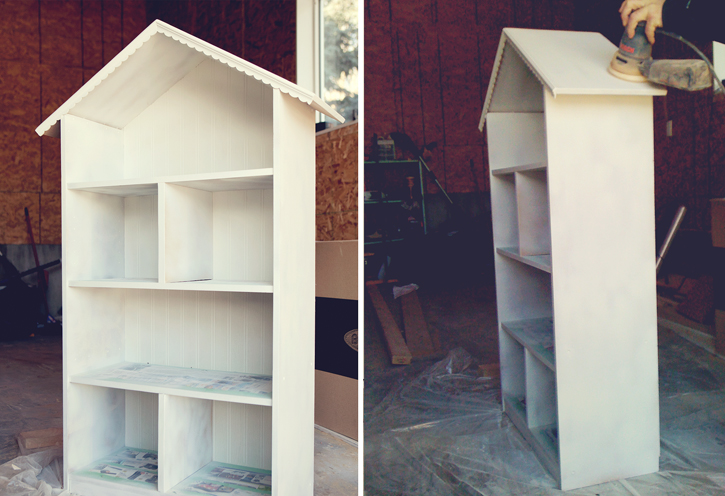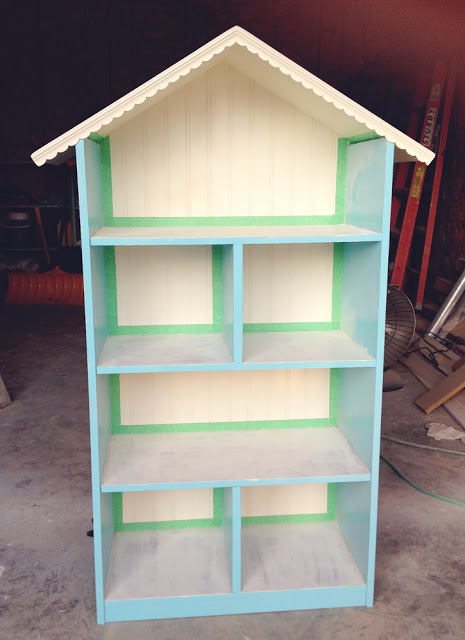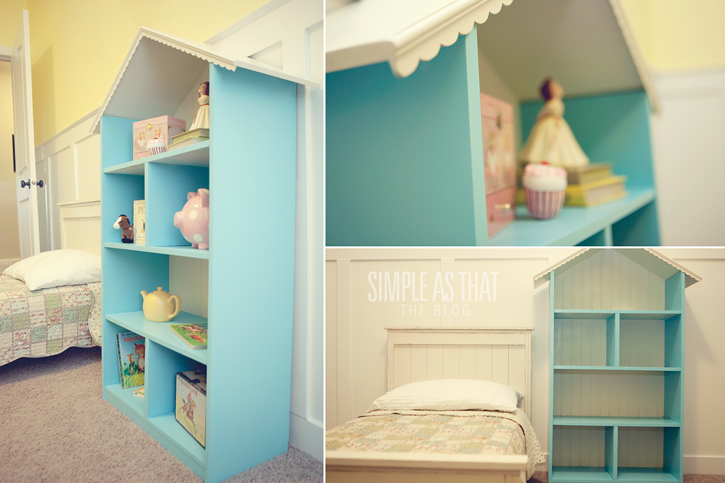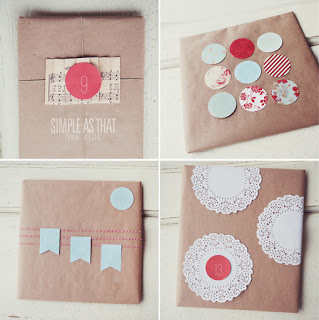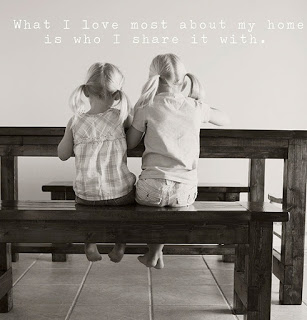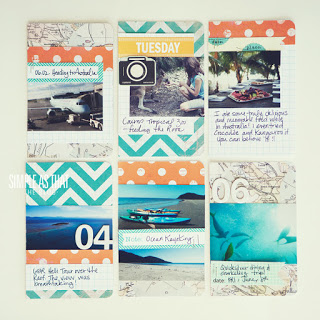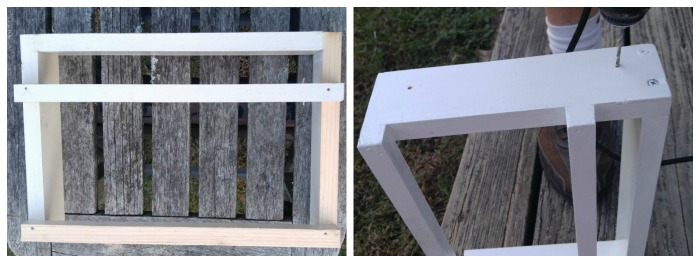{happy wednesday, crafters!} Hope your week is going wonderfully. Today I am showing off my corner shelf made from an old door. My corner door shelf is one of my all time favorite pieces of furniture!
DIY Corner Door Shelf

Davis and I made this about 5 years ago when we bought our first home. {sweet memories} Originally, I painted the door shelf an off white with a brown wash over it. {you can see my original picture of the corner shelf here. my style has changed a lot since then….as has my photog skills lol} I recently gave my corner door shelf a makeover with a coat of turquoise spray paint…..
Door turned into a Corner Door Shelf
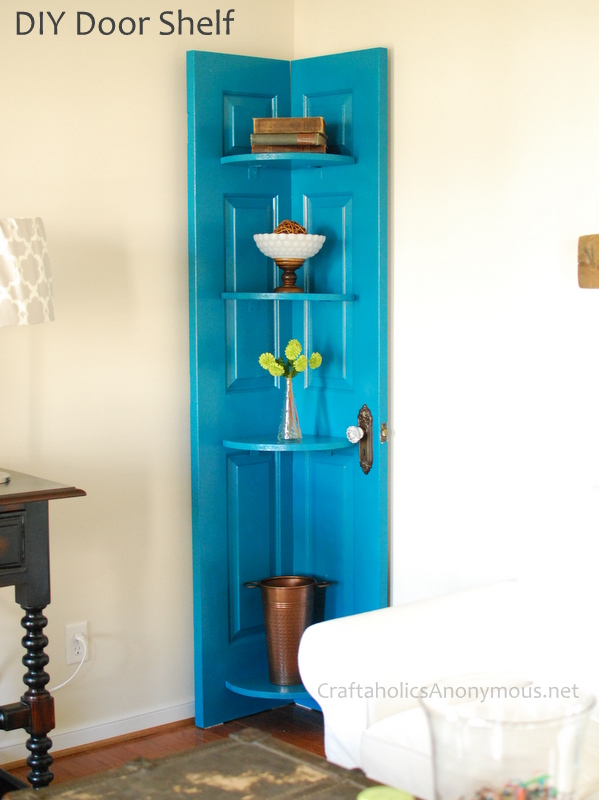
Its right at home in my Sitting Room! I’m doing turquoise and lime green in there and I’m using my shelf made from a door as the focal point/statement piece…..And it kinda rocks at both jobs! I’m still debating whether I should do a dark wash over the turquoise or not. Not sure if it will go with the modern-vintage look I’m going for in the room.
***will post pics of my Sitting Room when its done!***
added later: you can see my entire front room here.

Of course I used milk glass to accessorize it! the lime green flowers in a bud vase totally pop. So lively and fun!
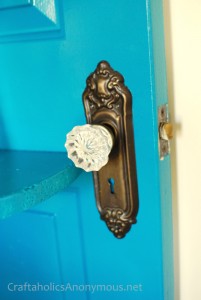
Corner Door Shelf
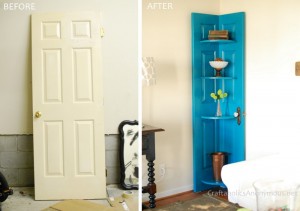
How to make a Door Shelf
supplies: door, circular saw, screw driver, screws, 13-90 degree metal L brackets, sand paper, door knob.
- First, we cut the door in half using a circular saw. {draw lines and measure twice!}
- Secure the two door pieces to be at a 90 degree angle using clamps and a helper. {i was the helper :)
- Screw in 5-90 degree metal brackets to the back to hold the 2 pieces together.
- Cut 4 shelves out of particle board to fit the measurements of your door. {note: we rounded the outer edge of the shelves, but you could leave them square.}
- Secure the shelves in place using 2-90 degree metal brackets under each one.
- Sand any rough edges with 200 grit sandpaper.
- Change the door knob, if desired. TIP: I recommend only putting one side of the door knob on so that the corner shelf can sit flush with the wall. Otherwise, you would have to leave room between the wall and shelf to allow for the knob.
- Paint and distress the door as desired. {I used 2 cans of turquoise spray paint for mine}
So that’s how we made my corner shelf. I love this piece! Its so cool and I still get loads of compliments on it. I think it would be cool to get different old doors and turn them into shelves like this. think of all the cool door designs! So many possibilities.
If you make a door shelf, I would love to see a picture!
happy crafting, linda
Original article and pictures take cf.craftaholicsanonymous.net site
